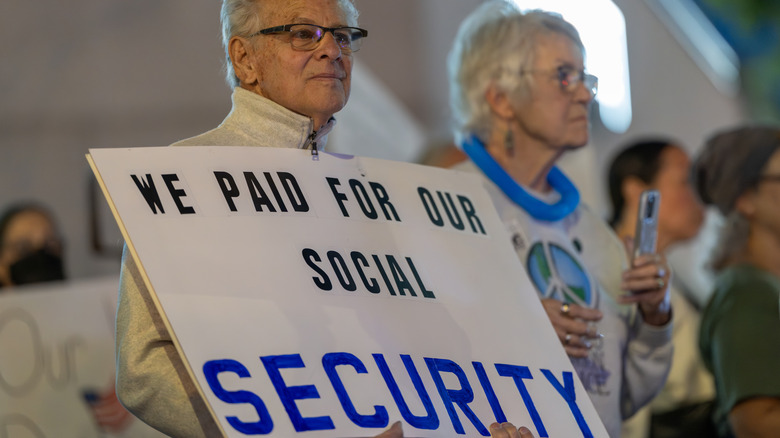New Proposal Would Limit Social Security COLA Increase For High Earners
To prevent cuts in Social Security in the future, a public policy thinktank has suggested capping cost-of-living adjustments (COLA) for retirees who receive the highest monthly benefits payments. According to an October 2025 paper from the Committee for a Responsible Federal Budget (CRFB), a monetary limit on COLA hikes could save the Social Security trust fund anywhere from $35 billion to $385 billion in a decade. This savings could help mitigate, or even prevent, the anticipated 24% cut in Social Security benefits that the CRFB projects will kick in by late 2032 — when the trust fund becomes insolvent. Such a cut would amount to a loss of $18,400 a year for a typical couple retiring in 2033.
Currently, the Social Security Administration adjusts annual benefits based on the inflation rate (measured via the consumer price index) for hourly wage employees and clerical workers, also known as the CPI-W. Based on those figures, the SSA's official COLA increase for 2026 will be 2.8%, which means a retiree who receives a typical $24,000 a year will get an extra $650, per another CRFB report, while a retiree who takes in the highest annual beneficiary amount, $49,400, will gain an additional $1,400 for the year.
How a Social Security COLA cap would work
Under the CRFB plan, a COLA cap would be placed on retirees who receive more Social Security money than the typical retiree. By way of example, the CRFB gave a hypothetical case where the CPI-W was 2% in 2035 and a COLA cap was set at $900. A retiree entitled to $50,000 in benefits that year — and who would have therefore received a COLA bump of $1,000 for the year — would instead receive $900 under the new cap. Meanwhile, those who receive $45,000 or less in benefits would still get their full COLA amounts. A COLA cap on what the CRFB report referred to as the 75th percentile of benefits would help the Social Security system save $115 billion in the span of a decade, while A 50th percentile COLA cap would save $385 billion over the same period, and a 90th percentile COLA cap would save $35 billion.
Because Social Security income for retirees is determined by averaging their highest 35 earning years, this COLA cap would primarily impact high earners, according to the CRFB. That's because the higher the average, the more money one eventually receives in Social Security. For instance, per the SSA, the average amount retirees will receive in 2026 is $2,071 a month (or $24,852 a year, well below the cap limit proposed). Meanwhile, the maximum possible retirement benefit will be $4,152 a month upon retiring at age 67 (or $49,824 a year), while the maximum benefit for someone who delays retirement until 70 will be $5,430 a month (or $65,160 a year).
Why a COLA cap may be needed
Social Security is rapidly running out. The CRFP asserted that Social Security funds, which mainly come from a 12.4% payroll tax split between employers and employees, have already been falling due to more of the population aging out of the workplace while fewer younger people are entering the workforce. This problem is also set to be further accelerated thanks to new tax cuts and senior deductions under the One Big Beautiful Bill Act.
Traditionally, Social Security is taxed for retirees who receive at least $25,000 in other income if single, or more than $32,000 if a married couple. Those taxed funds are then sent back to the Social Security trust fund, and Medicare's Hospital Insurance fund. However, that cash flow will be cut thanks to these new tax deductions for people aged 65 and over — up to $6,000 for a single person, and up to $12,000 for married couples. These deductions, along with other new and extended tax cuts under the OBBBA, will reduce the flow of money toward Social Security by about $30 billion per year, according to CRFP, and will speed up Social Security's insolvency by a year.


